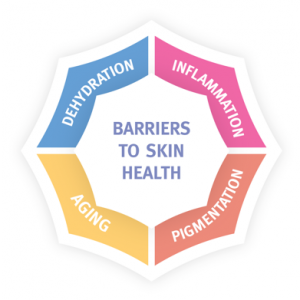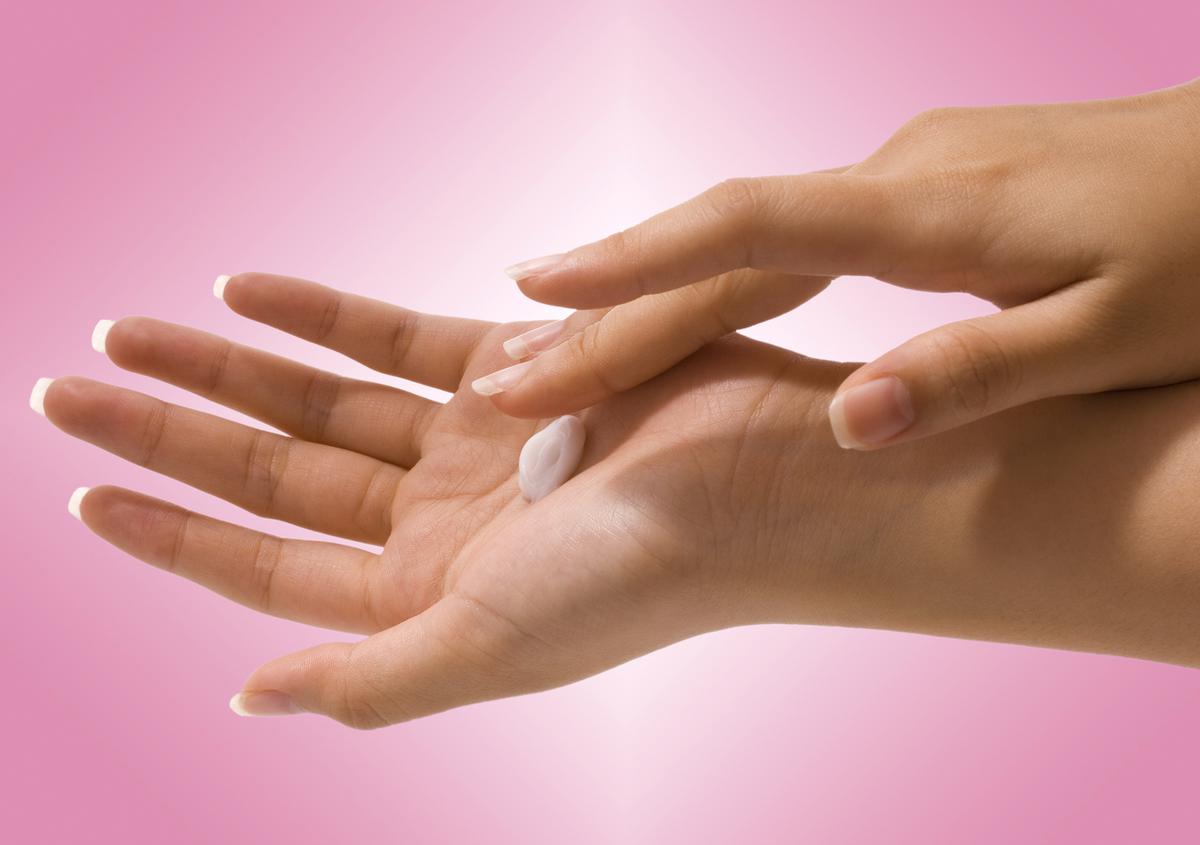In this 5 part series, the world-renowned dermatologist, Dr. Leslie Baumann, will be sharing her extensive skincare expertise. From properly identifying a patient’s skin type to learning about skincare product manufacturing and packaging processes, our readers are sure to learn something new from this informative series.
In the first installment of this series about skincare retail, I explained the importance of identifying a patient’s Baumann Skin Type® to guide your patients to use products with the highest efficacy to achieve the very best outcomes. This will help you to build trust and loyalty, differentiate your practice and grow your business.
In this second of five installments, I’ll discuss how to choose ingredients and products that are appropriate for the patient’s skin type, as well as the importance of product formulation. I am a lifelong learner about cosmeceuticals and I research, expand, and test my knowledge every day. In order to guide my staff and other dermatologists so that they can offer patients the same skincare expertise, I streamlined the entire skincare recommendation process using software that I constantly update with the latest skincare technologies. This is how the system works within a medical practice:
- The patient takes the Diagnostic Questionnaire on a mobile device or tablet.
- The patient is diagnosed as one of the 16 Baumann Skin Types.
- The patient is educated about their skin’s needs and specific concerns.
- The staff member accesses the DDQ results and skin type which can be used during the patient visit to speed up the time in the exam room and educate the patient.
- The Skin type Solutions software automatically generates an efficacious skincare regimen.
- The doctor (or designee) reviews and customizes the regimen (which may include prescription medications).
- The patient is given a printed step-by-step skincare regimen that also displays in their mobile app.
- The patient purchases the correct products from the physician.
- The patient is given detailed instructions to increase compliance.
- The patient returns in four weeks for follow-up.
- The regimen is adjusted according to their skin’s response.
Using the system above is an easy, innovative, and customized way to develop efficacious skincare regimens. The doctor can choose to retail products from over 40 brands that are included in the Skin Type Solutions System because they have met strict patented criteria about what the products can and cannot contain and how they are formulated, manufactured, and packaged. When testing and approving products to be included into the Skin Type Solutions System, I take into account many factors, including ingredients. I test all products independently from the brands to make sure that the products have efficacious ingredients in an effective concentration at the proper pH and packaging.
Cosmeceutical Ingredient Science
To ensure that patients are getting the most efficacious products for their unique skin concerns, one must understand science and cosmetic chemistry. Dermatologists are uniquely positioned to be skincare experts because of our many years of skin science training. Cosmeceuticals have become very scientific with new discoveries about genetics, growth factors, the microbiome, and stem cells leading to new products that may or may not have efficacy. You need a residency in dermatology just to decipher the marketing claims from the real science!
I have dedicated the last 20 years to research on cosmeceuticals and how they affect various skin types. My book, Cosmeceuticals and Cosmetic Ingredients (McGraw-Hill), discusses ingredient science with a great level of detail that I cannot cover here. I also write a column called “Cosmeceutical Critique” for Dermatology News. It is my passion to independently research ingredients and products and to share what I’ve learned in order to offset the widespread hype and misinformation on skincare ingredient science. There are a few main points that you need to know.
The most important point is that no one ingredient is right for all skin types. Each skin type has different needs depending on what underlying issues they have. Also, no one brand has all of the best technologies. One brand may have the best sunscreen technology, but that doesn’t mean that its cleansers and moisturizers contain the latest technologies. If you want to be an expert on skincare, you need to be as brand-agnostic as possible. You need to carefully consider the product layering concept. This starts with understanding which ingredients work well together and which do not because ingredients can affect the efficacy and side effect profile of other ingredients. The order in which ingredients are placed on the skin is crucial because they can inactivate each other and affect absorption. Giving patients instructions on what order to apply the products in can help improve outcomes by allowing the ingredients to have a synergistic effect with each other rather than an antagonistic effect. It is important not to fall for the hype of new ingredients and realize that there are ingredients that are not effective for any skin type such as stem cells. Remember, the main goal is improved patient outcomes! When you provide your patients with products that work for their skin, they will trust you, refer their friends and family, and remain patients for years to come. I like to think, “First the outcome, and then the income.”
Choosing Ingredients That Are Appropriate for a Patient’s Skin Type
It is important to understand the characteristics of various ingredients and match those to your patient’s Baumann Skin Type as discussed in the first article in this five-part series. Once a patient’s skin type is diagnosed, the dermatologist (or designated staff member) can match the characteristics of various ingredients to the particular needs and concerns of that skin type. The “Library” section of www.skintypesolutions.com contains valuable information about which ingredients are helpful and harmful for each of the 16 Baumann Skin Types, as does my book, Cosmeceuticals and Cosmetic Ingredients (McGraw-Hill). I am planning future training videos on ingredients to help you understand this complicated topic.
Choosing Products for Each Skin Type
There are many factors to consider when selecting brands and specific products for retail, especially when considering the spectrum of skin types. I like to simplify it by matching ingredient categories to which “barriers to skin health” the patient’s exhibit.

- Dehydration requires a Barrier Repair Moisturizer.
- Inflammation requires Anti-Inflammatory ingredients
- Pigmentation requires Tyrosinase inhibitors, Retinoids, PAR-2 blockers and SPF
- Aging requires SPF, Retinoids, Hydroxyacids, Ascorbic Acid, and other anti-aging ingredients.
Choose the Best products from Each Brand
I choose the best “hero” products from the various brands and layer them in a sequence that increases efficacy of all of the products. I then test the entire regimen on patients to figure out what combinations have the best efficacy and fewest side effects. Once I have identified the most efficacious product combinations, they are added to the Skin Type Solutions Software, which automatically generates regimens by Baumann Skin Type so that I do not have to rethink this complicated subject matter with every patient. I have developed over 3,300 distinct regimens that take into account many issues, including the barriers to skin health mentioned above.
How Product Categories Affect Outcomes
Designing an efficacious skincare regimen requires a plethora of knowledge about cosmeceutical science. Luckily, I am a lifelong learner who is always in pursuit of the perfect skincare regimen for my patients. In my opinion, the foundation of a skincare regimen is the treatment product that is designed to treat one of the above mentioned barriers to skin health. This might be an acne, rosacea, melasma or photoaging cosmeceutical, OTC or prescription medication. It is best to put the most important treatment product such as a rosacea or acne medication on freshly cleansed skin covered with a moisturizer. The rest of the regimen should be designed to enhance the efficacy of the treatment product.
Cleansers directly influence efficacy and penetration of the treatment products by altering the pH of the skin, loosening attachments between cells, removing lipids and disrupting the bilayer protective membrane, and desquamating layers from the stratum corneum. Every ingredient and characteristic should be considered when choosing a cleanser.
Moisturizer choice is also very important to improve the efficacy of the treatment product. Moisturizers can hydrate, protect, and treat the skin. Moisturizers directly affect penetration of the treatment product by providing an occlusive effect. They often contain oleic acid, hyaluronic acid, or fatty acids that increase penetration of other skin care ingredients. They also help protect the underlying treatment product from getting wiped off on a pillowcase or into the environment. In other words, moisturizers “seal in” the treatment product. Some moisturizing ingredients such as heparan sulfate may affect how well the skin cells “hear” and respond to signals elicited by the treatment products. For this reason, moisturizers should also be chosen to improve the efficacy of the treatment product.
Using this brand-agnostic and scientifically-based approach to choose skincare products is an ethical and efficacious solution. Using the software makes it fast and easy and empowers your staff to properly guide patients toward improved outcomes.
I’ll be outlining more steps to properly and ethically recommend and retail skincare over this series of five articles. The next article will discuss product formulation and manufacturing issues to consider when choosing what cosmeceuticals to sell in your practice. To learn more about my innovative, customized, expert skincare diagnostic system please visit STSFranchise.com or feel free to email me at [email protected]. You can also follow me on LinkedIn, LeslieBaumannMD.com or Instagram @LeslieBaumannMD.
Missed Part 1 of this series? Check it out here!

